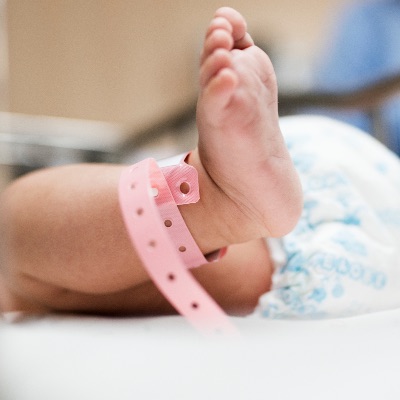 IVF, ICSI, Success & Happiness"
class="bg-img"
fetchpriority="high"
loading="eager"
decoding="async">
IVF, ICSI, Success & Happiness"
class="bg-img"
fetchpriority="high"
loading="eager"
decoding="async">
Written By: Women & Infants Fertility Center on May 17, 2021
In 1994, the Santoro family, residents of Cumberland, were part of the first group trying to conceive through intracytoplasmic sperm injection (ICSI) treatments, a little known or practiced procedure that was new to the Center for Reproduction and Infertility at Women & Infants Hospital (now Women & Infants Fertility Center). The Santoros were eager participants because doctors had told the them the procedure was their only hope of conceiving a child.
ICSI is used in conjunction with in vitro fertilization (IVF). The ICSI procedure was developed to help couples having difficulty achieving pregnancy even with IVF. This can be due to poor sperm quantity and/or quality, preventing the sperm from being able to break through the outer shell (corona radiata) of a woman’s egg and get to the cytoplasm inside where fertilization actually takes place. It can also be used when IVF is unsuccessful, when couples have a low egg-retrieval rate, or when the corona radiate (shell surrounding the egg) is thicker than normal, preventing sperm from breaking through, also known as “hatching.”
ICSI attempts to work around these obstacles. The male’s sperm is collected and the woman’s eggs are retrieved as part of IVF. Using an electronic microscope and fine instruments, an embryologist retrieves the sperm in a needle, breaks through the corona radiata and injects the sperm right into the cytoplasm. If fertilization occurs, an embryo forms, which is implanted in the woman’s uterus where it can develop into a pregnancy. In 1994, the procedure was in its infancy, so to speak.
“Even with ICSI, they said we really had no shot. But, at that point, I would have done anything,” Lisa Santoro says quietly.
The couple came to Women & Infants to start treatments in the summer of 1994. After several failed cycles, Lisa conceived their son, Joshua, who was born in 1996.
Several years later, the Santoro family returned for more treatments. Their family expanded in 2000 with the birth of daughter Lauren and again in 2003 when daughter Abbey was born. In total, Lisa underwent 11 cycles from 1999 to 2002.
“We were very, very lucky! But, it’s not an easy process,” Lisa laughs.
That’s where the staff at Women & Infants Fertility Center stepped in, working diligently to keep the Santoro’s spirits aloft.
“They are so compassionate. They understand what your situation is. They’re calling, checking on you, making sure everything is okay,” Lisa says, adding that the staff was “big on education.”
“This is the best story I’ll ever be able to tell,” Lisa says. “I don’t think you’ll find this type of success or happiness anywhere else.”
Disclaimer: The content in this blog is for informational and educational purposes only and should not serve as medical advice, consultation, or diagnosis. If you have a medical concern, please consult your healthcare provider or seek immediate medical treatment.
Send Us A Message
90 Plain Street,
Providence, RI 02903
Copyright © 2026 Care New England Health System